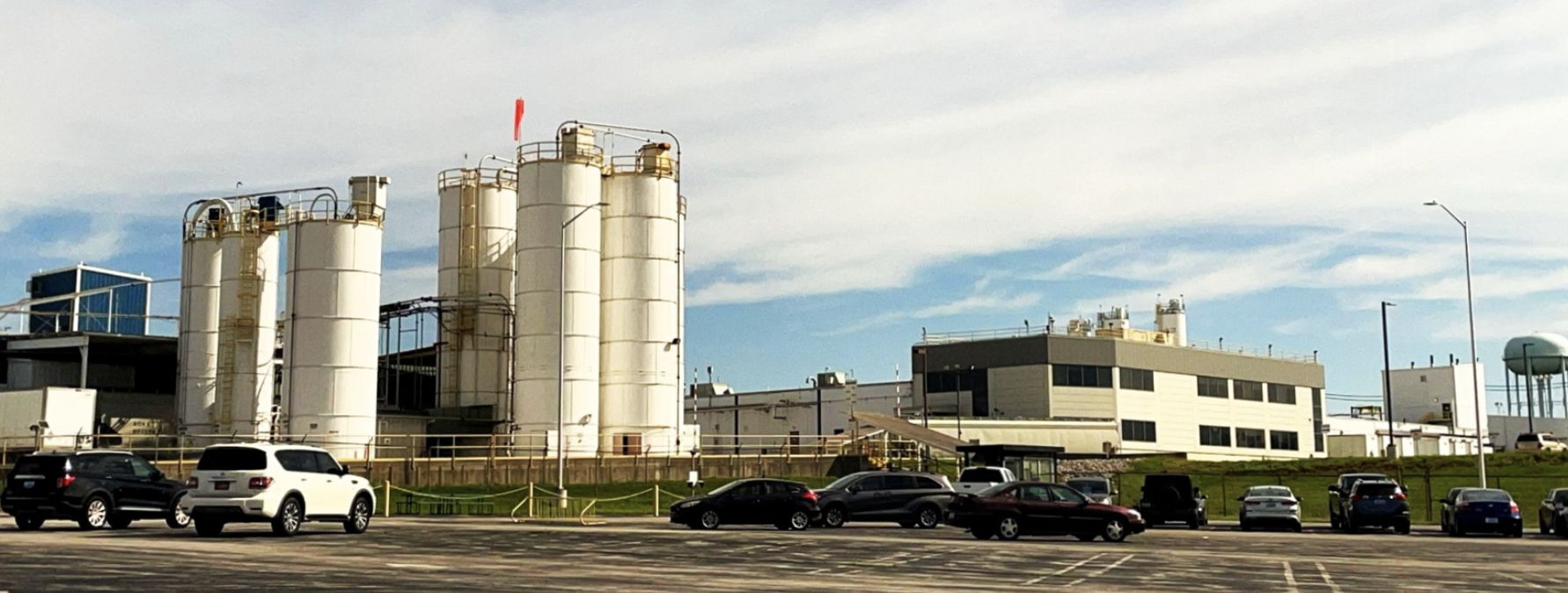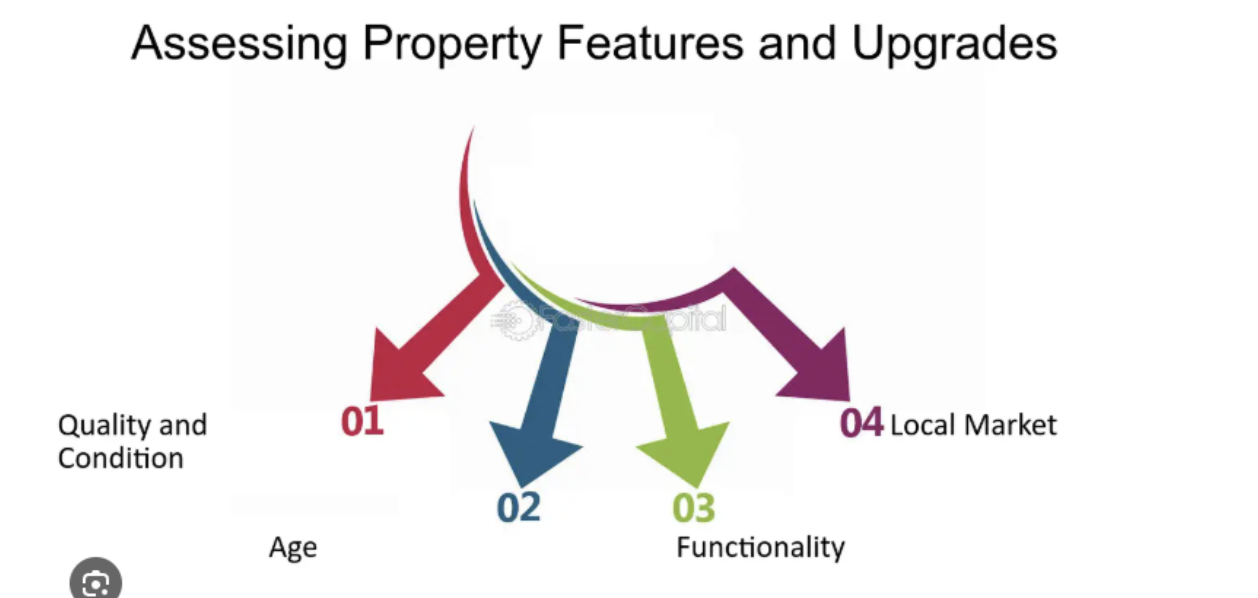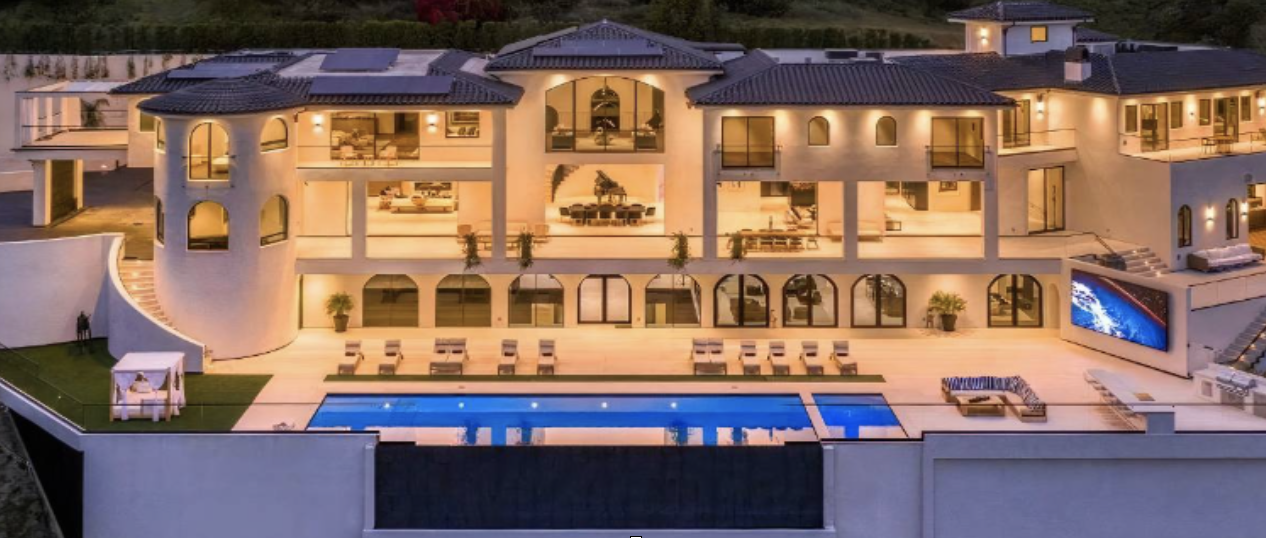We appraise the following Property Types:
Manufacturing Facility
Distribution Facility
Research & Development Facility
Freight Terminal
Storage Facility
Other Industrial
Office Facility
Office Condominium
Apartment Community
2-4 Family Residential
Manufactured Home
Subdivision
Development Land
Retail Building
Shopping Center
Protected Wetlands
Automobile Dealership
Medical Complex
Other Commercial
Mixed Use
Educational
Wedding Venue
Religious Campus
Tax Appeal
Disputes
Divorce
Expert Witness
Consulting
In real estate appraisal factors such as High Dollar Value, Large Building Area, Multiple Acreage Land Tracts, Environmental Contamination, Rural Location, Adverse External Factors, Deferred Maintenance, Outdated Design & Obsolete Functionality are indication of a property being complex. The more of these factors, the higher the level of complexity.

Complexity comes into play in a number of ways with regards to real estate appraisal. A Complex Property requires a Complex Appraisal which takes the appraiser significantly more time. This increases the cost of the appraisal.
With regard to having a Complex Property appraised it is important to hire an expert with extensive experience in Complex Property Appraisal.
We here at Bluegrass Industrial Appraisal have completed thousands of Complex Appraisals over the past 30 years in and around the Louisville, KY market area.
In commercial properties, Deferred Maintenance is the conscious act of delaying necessary repairs, upkeep, and system upgrades, often due to budget constraints, lack of funds, or a strategic decision to prioritize other tasks.
While it might seem like a short-term cost-saving measure, deferred maintenance can lead to a cycle of escalating problems, increased repair costs in the future, reduced property value, lower tenant satisfaction, potential safety hazards, and even legal repercussions.

Commercial Properties within the Bluegrass Industrial Appraisal coverage area, The Louisville MSA or Kentucky & Indiana, are considered relatively typical if they have had a regular schedule of routine maintenance and are in generally good repair.
If a property is suffering from significant deferred maintenance, the appraiser must spend additional time (usually significant hours) considering, and analyzing the effect such depreciation has on the value of the property. The appraiser must spend time estimating the cost of making repairs, and modernizations. The appraiser needs to analyze the cost benefits of making repairs, weighted against the Contributory Value of the expenditures.
These extra steps take time. They must be completed with great care, and based on market data extracted from other similar properties. This leads to significant additional time spent researching sales, and verifying specific details regarding each market data point.
In such cases this adds significant complexity to the project. As a result, commercial properties having considerable deferred maintenance are more difficult to appraise.
Appraisers, like other professions, accountants, engineers & architects, charge based on the amount of hours spent on a project. The further away from the city, the more complex the appraisal is likely to be. The more complex an appraisal is, the higher the fee.
In real estate appraisal, the Principle of Contribution states that the value of a property component is measured by its monetary or economic Contribution to the total property's market value, rather than by its cost to add that component. An appraiser determines the contributory value by observing what a buyer would be willing to pay for that specific part of the property in the current market, which can result in a cost exceeding or falling short of the improvement's actual cost.

At Bluegrass Industrial Appraisal we are experts at determining the economic value or contribution the improvements make to the land.
Functional Obsolescence or Obsolete Design is a loss in a property's value or utility caused by an outdated design, feature, or flaw that is no longer desirable or efficient according to current market tastes and standards. This often occurs due to changes in architectural trends, technology, or functionality, leading to issues like inefficient floor plans, a lack of modern amenities, or outdated fixtures.

Super-adequacy, is a type of Functional Obsolescence in real estate where a property has features or qualities that exceed market standards for its area, leading to a depreciated value, when compared to its construction costs. In other words, the improvements cost more build new than they Contribute to the resale price.
Common examples include a home with a high-cost, custom kitchen in a neighborhood of modest homes, or an oversized house in a neighborhood of smaller properties. Components of Super-adequacy include:

EXCEEDING MARKET STANDARDS: In the context of real estate, exceeding market standards means a property has features, size, or quality that are superior to the typical or standard properties in its immediate neighborhood or market area.
REDUCED VALUE: The property or feature doesn't add its full cost to the market value. For instance, a $50,000 pool might only add $15,000 to the home's value.
LUXUYRY FEATURES: A $60,000 custom kitchen when the average sale price in the neighborhood is $100,000.
COSTLY AMENITIES: A home with an indoor swimming pool, which can be expensive to maintain and less appealing to buyers in certain markets, is an example of Super-adequacy.
THE PRINCIPLE OF CONTRIBUTION: Appraisers consider the Principle of Contribution addresses how improvements contribute value to land. The value of an improvement is based on what it adds to the entire property, not the cost of the improvement itself.
A property having an Outdated Design suffers from a form of Physical Depreciation sometimes referred to as Functional Obsolescence which is a loss in a property's value, and/or utility, caused by an outdated design, feature, or flaw that is no longer desirable, or efficient according to current market tastes and standards.

This often occurs due to changes in architectural trends, technology, or functionality, leading to issues like inefficient floor plans, a lack of modern amenities, or outdated fixtures.
In some cases, it may be Curable (fixable by the owner). Or it may be incurable (too costly or impractical to fix), and in some cases, a property may be overbuilt with too many expensive, unnecessary features, which is also a form of functional obsolescence called Superadequacy.
In such cases this adds significant Complexity to the project. As a result, commercial properties suffering from Functional Obsolescence can be more difficult to appraise, requiring more time for research, analysis and reporting writing and as a result the appraisal fee is higher.
External depreciation in real estate, also known as external obsolescence, is a loss in a property's value caused by factors outside the property itself, such as negative economic conditions, changes in the neighborhood, or adverse external factors like increased noise from a nearby highway or changes in zoning. These influences are generally incurable, meaning a property owner cannot fix them by investing money into the property.

External depreciation is categorized into economic, social, and political factors, including:
Economic Factors: A declining neighborhood economy or a local recession can lead to falling property values even if the property itself is in good condition.
Social/Environmental Factors: A nearby garbage dump or significant noise from a new airport flight path could negatively impact a property's desirability and value.
Political/Locational Factors: Changes in local zoning laws, the construction of major infrastructure like highways that disrupt traffic, or changes in the overall desirability of the area can all contribute to external depreciation.
Adverse External Factors are outside forces that decrease a property's value and are beyond the control of the property owner. These can be grouped into economic, locational, environmental, and regulatory influences.
Some examples of external factors which can have a negative impact on commercial property values are as follows:
Giving appropriate consideration to External Influences such as these and others can result in significant additional time spent on analysis, development of Highest & Best Use, and Report Writing. The result being a more Complex Appraisal, which increases the Cost of the Appraisal.
Commercial Properties within our Coverage Area, the Metropolitan Area of Louisville, Kentucky & Southern Indiana, are considered relatively typical if there are no significant Adverse External Factors. This is not always the case. There are numerous variables to consider. We are speaking in generalities.
Having sufficient and easily obtainable market data results in less hours of analysis, and less Report Writing. As a result, the cost of the appraisal is lower.
When appraising commercial or industrial real estate in our Coverage Area, Louisville, KY and the surrounding areas it is necessary for appraisers to be aware of such adverse conditions as any underground waste dumps, condemned properties, or economically declining neighborhood.
Appraisers, similar to other professionals such as, accountants, engineers & architects, charge fees based on the amount of hours spent on a project. The larger the land tract is, the more Complex the Appraisal is likely to be. The more Complex an Appraisal is, the higher the fee.
The same reasoning applies to commercial properties having relatively small land tracts. For example, a commercial facility residing in a modern industrial park, near a favorable economic zone, is often considered relatively straight forward and as a result, a lesser degree of Complexity. As a result, the appraisal cost tends to be lower.
The Principle of Substitution in real estate appraisal is a theory that supposes a property's value is limited by other similar, or comparable options which exist in the market for any buyer to consider.
The cost of acquiring an equally desirable substitute property with comparable utility is among the many factors that any buyer will consider. This economic principle assumes that a buyer will not pay more for a property than it would cost to get a similar one, elsewhere.

This principle is fundamental to all three Recognized Market Approaches to Value, which appraisers employ to reach their final conclusions and opinions of a property’s market value. Factors which are considered are as follow
For example: If two identical, three-bedroom houses are for sale in the same neighborhood, and one is priced at $350,000 while the other is listed for $300,000, a buyer will likely purchase the $300,000 house due to the principle of substitution.
Key Aspects of this Principle are:
COMPARABLE UTILITY: The substitute property doesn't have to be an exact duplicate but must offer the same level of use and benefit (utility).
COMPETATIVE MARKET: This principle assumes a competitive market where buyers have choices and can readily find substitutes.
MARKET DRIVEN: Value is determined by what a typical buyer is willing to pay, making the concept a core driver of real estate market activity.
With regard to Bluegrass Industrial, we have completed over 17,000 appraisals in the Louisville, KY area over the past 30 years. This has made us certified experts. We know our market area and know what other similar options are available which may represent alternative properties for any property we appraise. This helps us stay realistic, and as a result, accurate.
Types of Economic Loss
Rational
To explain the differences between the three types of economic loss let me begin with a very simple hypothetical example, a white mouse you might say, that is an automobile.
Physical Depreciation
Consider that in 2021 a person buys a new automobile and drives it for 10,000 miles. During that time there are no mishaps, no measurable damage has been done to the car, and it is still the most current model that manufacturers offer for that model. The only thing that separates this 2021 car from a new 2022 model is the 10,000 miles on the odometer, which tells any potential buyer that the engine, transmission and other drivetrain functions have some level of wear and tear, no matter minor.
It is easy to understand that this 2021 car is less valuable than a brand new 2022 model with 0 miles. This is an example of physical depreciation.
Functional Depreciation
For the purpose of understanding functional deprecation let us consider this same 2021 car that has 10,000 miles on it and compare it to a similar car. The similar car is the same make and model, sale color and same trim as the 2021 car. But it is a 2018 model, also having 10,000 miles and being in exceptionally good even like new condition. In this case, the primary difference is that the manufacturer redesigned the car in 2020 reintroducing it with a host of improvements such as more horsepower, sleeker design and better fuel economy.
In such cases it is easy to understand that the 2018 car would be more valuable than the 2021 largely due to the redesign. The new and improved 2021 model has caused functional depreciation to occur in the 2018 car.
External Depreciation
Unlike automobiles, which have helped me to explain physical and functional depreciation, cars are not affected by external depreciation. Land, or real property are.
In a real-life example, there was a small town in Kentucky that was proposing to allow a waste treatment and waste disposal company to buy several hundred acres of land to operate as a trash dumping facility.
The residents of that county protested, and the measure was defeated. The residents sighed a sigh of relief. You might say, “They dodged a bullet.” The waste treatment plant would have caused significant depreciation to the real estate prices in that county. This is an example of external depreciation. External deprecation is not curable.
Curable Depreciation Vs Incurable Depreciation
Curable & Incurable Depreciation
In real estate, curable depreciation is a loss of value that can be economically fixed, while incurable depreciation is a loss of value that is too costly or impractical to correct, impacting the property's overall value.
Curable Depreciation
Incurable Depreciation
Aspects of Property Maintenance
It is necessary to firmly grasp all the various aspects of what is considered “maintenance” if we are going to delineate between curable & incurable depreciation, which is necessary to estimate the depreciation of the existing improvements to the land.
The concept of building maintenance, or property maintenance, must be understood as an interconnecting group of factors, rather than one single clear-cut term. These factors could be listed as follows:
Routine Maintenance
Routine maintenance involves regularly scheduled tasks to keep equipment, facilities, or assets in good working order, preventing breakdowns and extending lifespan.
Examples of Routine Maintenance
Regular routine maintenance could be summed up as a proactive approach to managing assets and ensuring they function optimally. Routine Maintenance results in increased property values. Conversely, Deferred Maintenance could be defined as a lack of Routine Maintenance.
Deferred Maintenance
Deferred maintenance involves delaying or postponing routine maintenance, repairs, and upgrades that are necessary to maintain the functionality and lifespan of assets, infrastructure, or property.
Causes of Deferred Maintenance
There are several possible causes of deferred maintenance, the most common are:
Consequences of Deferred Maintenance
Although there are numerous consequences to deferred maintenance, each of them can be considered, or could lead to economic losses, in one way or another. Some of the causes are listed as follows:
The list above is a short list of the problems associated with the lack or regular property maintenance. There are many other adverse effects, and as a result, routine maintenance schedule is a critical aspect of maintaining the condition and as a result market value of an improved property.
Examples of Deferred Maintenance
There are too many examples of deferred maintenance to list here. However, some examples are as follows:
Cures for Deferred Maintenance
The economic benefits of curing deferred maintenance will outweigh the alternative which is to all further deterioration of the physical improvements. Curing deferred maintenance typically involves two things as follows:
Capital Improvements
Capital Improvements are permanent enhancements to a property or asset that increase its value, extend its useful life, or adapt it for new uses. While repairing a roof leak would typically fall into the category of Routine Maintenance, a total roof replacement is an example of a Capital Improvement.
More examples of Capital Improvements include:
How Capital Improvements Differ from Routine Repairs
Capital Improvements can transform a property, can extend the useful life, significantly increase market value, enhance the utility and usefulness and make the property far more marketable.
When making a distinction between these two aspects of property maintenance there is often some level of overlap and as discussed prior some repairs or updates will be classified in both categories.
Total Building Renovation, or Modernization
Total building renovations encompass the comprehensive restoration & modernization of an entire building or facility. It often involves demolition, reconstruction, structural modifications and technical upgrades. Total renovation projects improve functionality and aesthetics, extend economic life and help the occupying business be more profitable.
Total renovations can involve a wide range of work, from kitchen remodels and bathroom upgrades to structural changes like removing walls or adding new ones.
Total Modernization Vs Remodeling or Renovating
Remodeling and renovating are terms which are often used interchangeably. Here I am making a clear distinction between what is typically thought of as :remodeling and what I am referring to here as “Total Modernization.”
Examples of Renovations
There are countless example of renovations. Provided here are only some examples.
Total Modernization
This is the highest tier regarding the concept of revitalizing older buildings or facilities. Aspects include:
The goal of modernization is not simply to restore improvements back to their original usefulness, nor to give existing structures a new look, or to repair all the broken and worn-out components of a property. In essence Total Modernization make a property not only effectively new but lowers the effective age of the improvements to somewhere in the 0–5 year range.